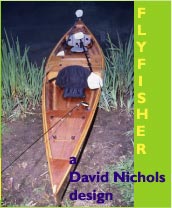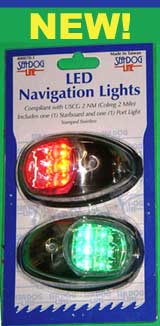
 Custom Search
|
|
| sails |
| plans |
| epoxy |
| rope/line |
| hardware |
| canoe/Kayak |
| sailmaking |
| materials |
| models |
| media |
| tools |
| gear |
 |
 |
| join |
| home |
| indexes |
| classifieds |
| calendar |
| archives |
| about |
| links |
| Join Duckworks Get free newsletter Comment on articles CLICK HERE |
|
|
| Valora's Log |
by David Nichols - Austin, Texas - USA More Electronics, Maintenance and Mechanical Electronics |
 |
| Valora came with good electronics; radar on a gimbaled mount and a chart plotter/radar screen at two stations. One station is down below at the table and the other is on a swinging rack in the companionway. It was several years old and gray scale rather than color but still excellent gear. She also had a ICOM fixed VHF and a hand held VHF. I added a dedicated laptop loaded with NOAA raster charts (from a DVD) and a USB GPS unit. The DVD, from Cruising Services.net in Sarasota Florida , came with charts for the Gulf coast, East Coast, West Coast, Great Lakes, US Caribbean and Pacific territories, and Sea Clear plotting and navigating software. The DVD and the USB GPS cost a very reasonable 99.00 (plus S&H). The tech support is really excellent as well. The laptop and digital charts were meant to be a back up to the on board chart plotters, so I bought two extra batteries to give the laptop about 8 to 10 hours of stand alone run time. The laptop stayed plugged into the ships electric system so it always had fully charged batteries in case the 12 volt system collapsed, as in a lighting strike. While the Laptop was meant to be just a back up to the main system I found myself using it several times a day. The raster charts have far more detail than the GPS chart plotters and it's much easier to get a detailed overview with the big screen on the laptop. What started out to be just a back up quickly became an indispensable navigation tool. I bought one more navigation tool that quickly became the mainstay of Valora's navigation system. The Garmin GPSMAP 441 with XM weather was added because I wanted the satellite weather but with its easy to read screen it turned into my main chart plotter. Old eyes need all the help they can get but it is a very easy GPS to learn to use too. So Valora's main NAV system became the Garmin 441 and the laptop. I think I was most grateful for the XM weather overlay when we were dodging thunder storms and lighting. The XM weather overlays and plots the direction the storm cells are moving in relation to the ship's position. This allowed us to slow down, change direction or in some cases stop to avoid the storm cells. Considering the fact that we dodged storm cells everyday it was a good investment in Valora's safety. XM weather isn't cheap to set up, you have to buy the chart plotter and the XM receiver but I never found myself saying I wish I hadn't spent the money. In fact just the reverse, every day I was very happy I had made the buy decision. Could I have gotten along without it? Yes, of course, but things would have been a lot more nerve racking than they were. There was one more piece of electronics that I brought on board; a handheld GPS. This was for a total worst case scenario where everything winds up completely crispy from a lighting strike. I never turn it on, thankfully. Maintenance and MechanicalThe hour meter on the diesel showed a little over 300 hours which meant it was hardly broken in. Tom had recommended a few things he felt needed to be done but it was nothing major. He suggested changing the impeller on the water pump, making a small change to the Racor fuel filter as well as change the filter, and replacing the exhaust elbow on the engine. It goes without saying that the oil, oil filter, and fuel filter needed changing also. All simple and easy jobs that I planned to do myself with a fairly complete tool set I bought for the boat. Actually, I bought the tools for the Nimble 30 and had carried the set from Austin. I could have had all the work done by a yard but I believe any owner needs to "own" the engine as best he or she can. By "own" it, I mean; understand it and be able to work on it, so when it has a problem in the middle of nowhere the parts and knowledge are there to fix it. If you (the owner) plan to cruise the boat then you must know how to repair it yourself. Valora's engine is easy to get to which is a blessing. I'm not sure how I could have worked on the engines in some of the boats we looked at and that can make even general maintenance a imposing chore. Not so with Valora.
I had to bleed the fuel system after I changed the filter. This is something every owner needs to know how to do in the dark. It needs to be automatic. It is something I need to work on and practice under controlled conditions. The exhaust elbow was easier than I expected and even though it was not in terrible shape I was glad I changed it. These types of projects are always easier at the dock rather than in a seaway. The rest of the maintenance, like oil change and rebuilding the marine head were also not complicated. Rebuilding the head, which I was dreading for obvious reasons, wasn't as bad as I thought it was going to be. Thankfully. Marine heads are notorious, some would say infamous, others would use stronger language, for being finicky and I plan to replace it with a composting head as soon as I can. I also found that if the filter in a 500 Racor fuel filter and water separator is changed, the system MUST be bled. This was discovered the hard way. David's plans are in the Duckworks Store Click Here for a List of Articles and Columns by David Nichols |


